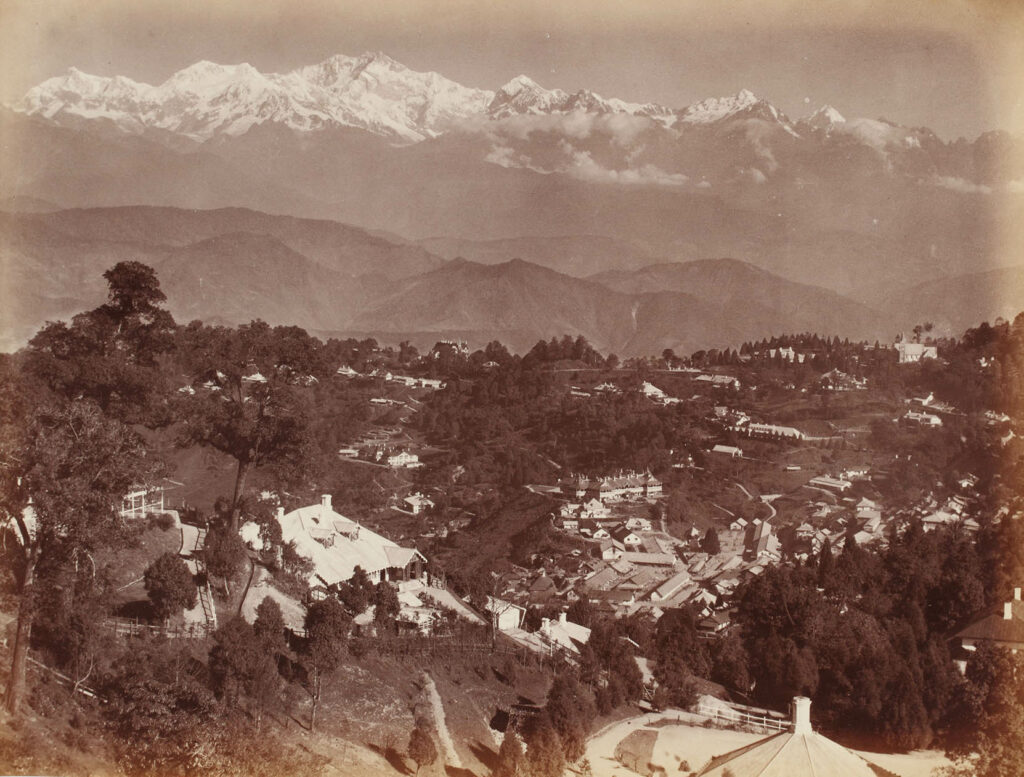
View of Kanchenjunga from Darjeeling, late 19th/early 20th-century, unidentified photographer, albumen print © Sarmaya Arts Foundation. (2016.4.11)
From 1820 to 1920, the British in India found many clever ways of justifying a holiday in the hills. In the shadow of the Himalayas and other vertical outcrops, they set up hill-stations to escape the sauna of the plains. In the north, outposts were established from Gulmarg to Simla to Nainital; in the east, from Darjeeling to Shillong; in the west, from Matheran to Panchgani; and in the south, from Ootacamund (Ooty) to Kodaikanal. By the end of their rule, close to 65 such hill retreats existed in India. In a romantic plot twist, their annual getaways became our honeymoon destinations.
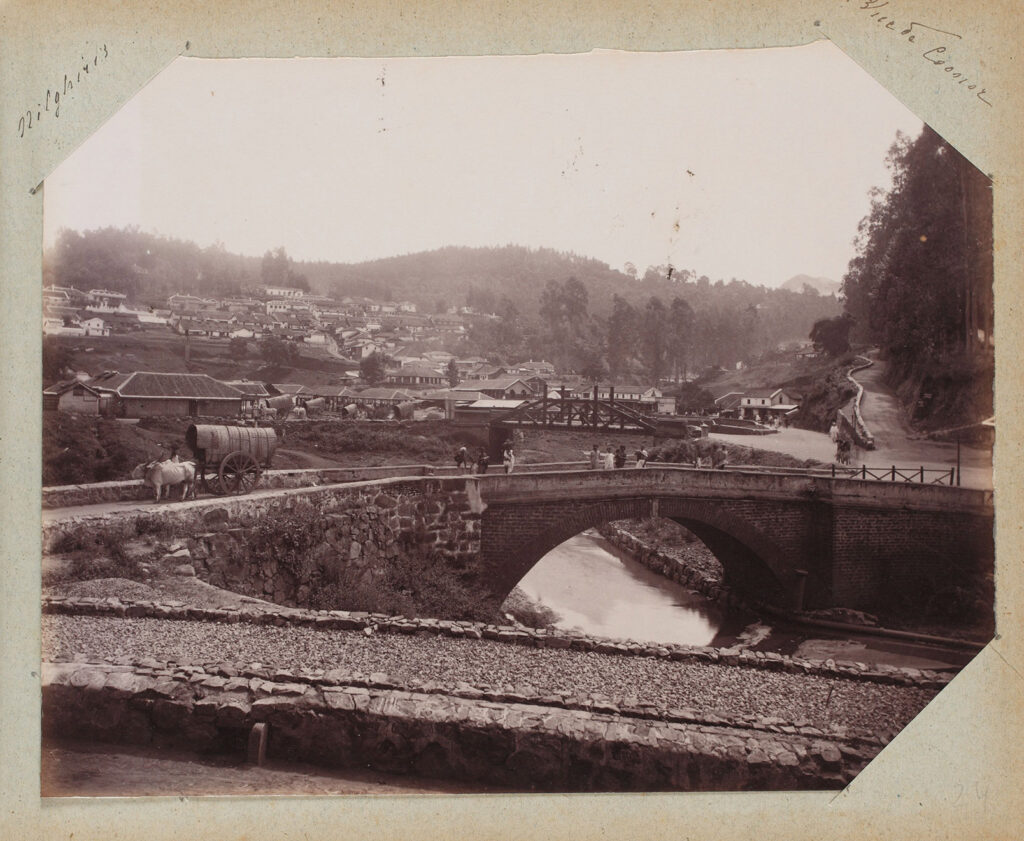
View of Coonoor, Neilgherries (Nilgiris), c. 1870 – 1920, unidentified photographer © Sarmaya Arts Foundation 2017.67.30 (23)
The hill-stations were originally sought after as sanatoriums. The British overlords of India needed the altitudes to recover not just “from the physical toll of a harsh climate, but also the social and psychological toll of an alien culture”. In the 1840s, this reason became horticultural, when tea, coffee, and cinchona estates were grounded on the slopes. In 1857, when violence charred the mainland, the hill-stations remained largely untouched and peaceful. Their strategic value was re-evaluated and military cantonments set up. Finally, in 1864, Simla was decreed the summer capital. In 1921, Mahatma Gandhi had written that Simla was the true headquarters of the rulers of India. By then, it was the principal residence of the viceroy of India, the commander-in-chief of the Indian army, the lieutenant governor of Punjab, and several other dignitaries. It was the nerve centre of the Raj.
The rise of Simla
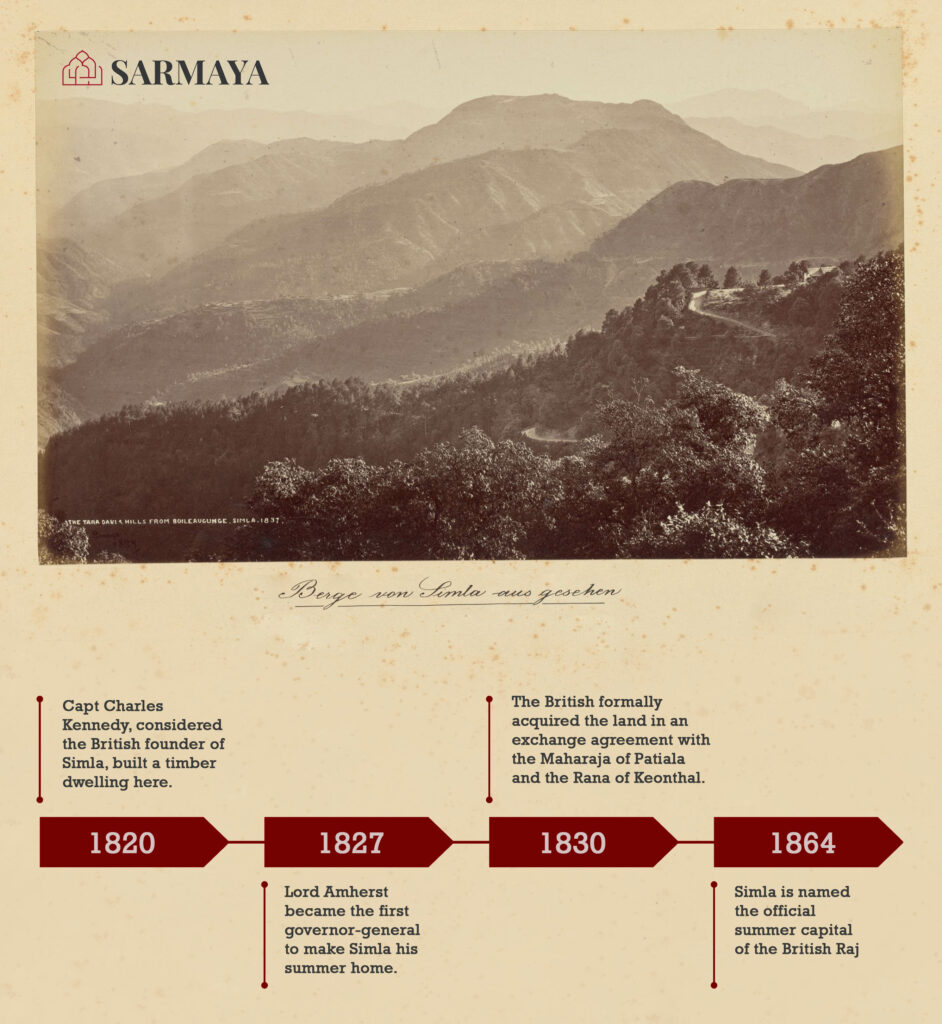
‘The Tara Devi and surrounding Hills from Boileaugunge’, Simla (Berge von Simla aus gesehn), 1865-66, Samuel Bourne, albumen print mounted on paper © Sarmaya Arts Foundation. 2022.14.29
Exodus to the hills
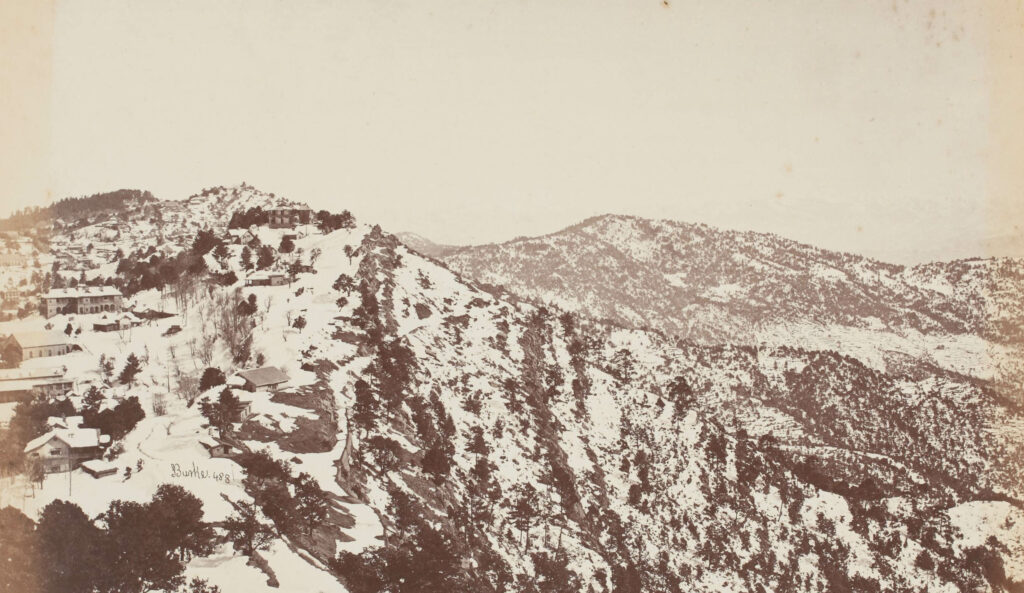
‘Murree in Winter’, Murree, present-day Pakistan, c. 1860s © Sarmaya Arts Foundation 2018.22.2 (28)
When the British first made their way to the peaks, it was to cure sickness and homesickness. The cholera epidemic of 1817-21 had just swept through the Subcontinent. The colonial view held that the tropics were a petri-dish of diseases like malaria, cholera, typhoid fever, hepatitis, and dysentery. In his book The Magic Mountains: Hill-stations and the British Raj Dane Kennedy notes that British troops often complained of “lethargy, irritability, depression, nervousness, insomnia and various other vague symptoms, which were diagnosed in descriptive terms such as ‘Punjab Head’, ‘Burma Head’, and tropical fatigue”. They craved the facilities of English spa towns like Bath and Brighton and sought to establish their Indian counterparts in the shoulder blades of the Himalayas.
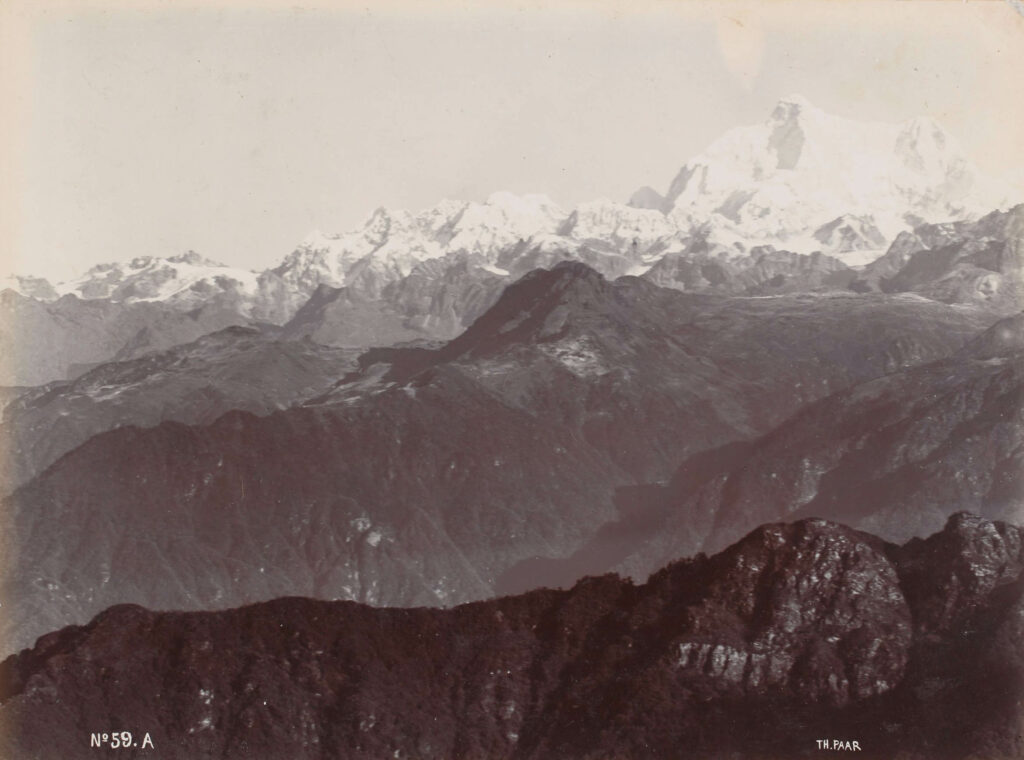
Gaurisankar, Darjeeling, late 19th -early 20th-century, Theodor Paar © Sarmaya Arts Foundation 2017.19.58
Once they set up camp on the mountains, the British discovered to their delight that the cool climate was perfect for growing the flowers, fruits and vegetables of the English countryside. Geraniums, fuchsias, and buttercups were planted alongside pears, plums, and turnips. The idea of the botanical garden took root, especially in Ooty and Darjeeling. “The European community seemed to stake its claim to the belief that it had a right and the resources to be away from home and yet be at home everywhere,” writes historian Queeny Pradhan in her book Empire in the Hills: Simla, Darjeeling, Ootacamund, and Mount Abu (1820-1920). So, there was a standard replication of features of the natural and social environment of Britain. With the building of clock towers, bandstands, fountains, and the Anglican church, the English village was recreated in body and soul in the heart of the Himalayas.
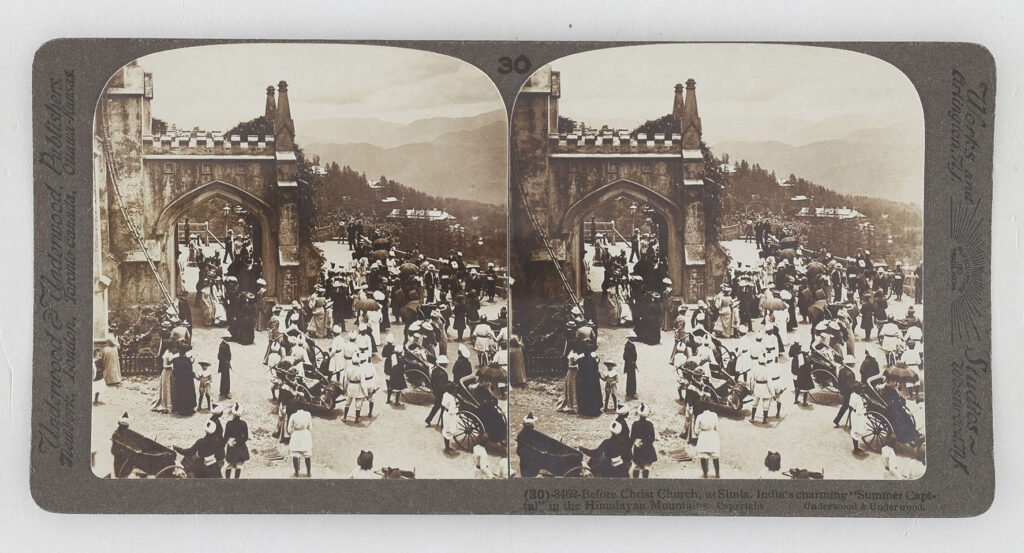
‘Before Christ Church, at Simla, India’a Charming “summer Capital” in the Himalayan Mountains’, 1903, published by Underwood and Underwood, silver gelatin print mounted on a stereo card © Sarmaya Arts Foundation 2017.15.1 (30)
It was with the arrival in large numbers of British women in the1833 that hill-stations truly settled into their own. “With so many British women ensconced in the hills, these locales did acquire a reputation for romance and scandal,” writes historian Dane Kennedy. “A seemingly endless series of social calls, teas, strolls, picnics, dinners, balls, fetes, races, amateur theatricals, and other festivities dominated the daily routine.” The census of the time suggests that at least 10 Indians were required to support each European; one report states that it once took 25 coolies to haul up a piano in Mussoorie. With the aid of their service, the memsahibs became a stereotype. “She became a creature of leisure, who spent her days in the confines of her bungalow, surrounded by a compliant army of servants, whose labour left her little to do besides nap, entertain, and gossip.”
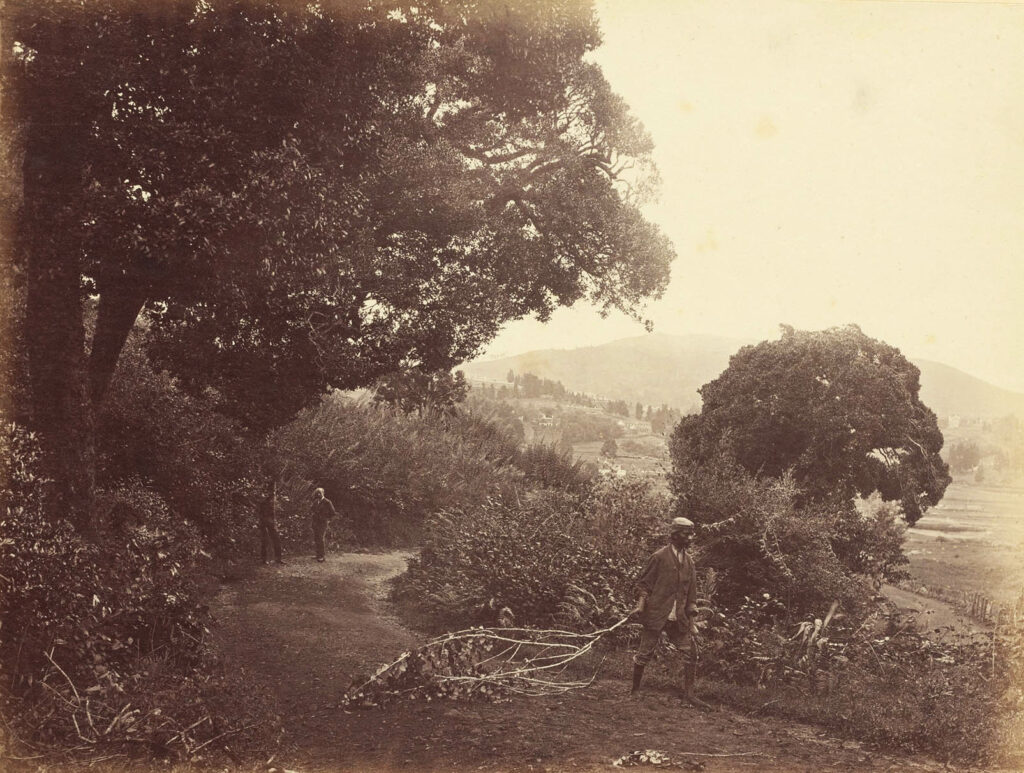
Ooty (Ootacamund), late 19th-early 20th-century, unidentified photographer © Sarmaya Arts Foundation. 2022.14.55
Racism was implicit, and sometimes explicit, in the British gentrification of the hills. These mountain enclaves were ideal for segregation. “European settlers recoiled at the proximity of the Indians.” So, the hill-station “served the symbolic purpose of inscribing social distance between the British and their Indian subjects on the landscape itself”. The original inhabitants of these valleys — the Paharis of Simla, the Lepchas of Darjeeling, and the Todas of Ooty, who were cultivators, herders, and hunter-gatherers — were recast as noble savages. Indian servants and porters were given threadbare clothes and made to sleep in the open. Few private houses had latrines for their use. Employers simply assumed they would fend for themselves as they did in the plains.
Life after 1857
British rule, in general, was an odd exercise of a remote-controlled reign. The colonisers wanted to keep Indian subjects under their thumb, but at an arm’s length. The events of 1857 exposed their vulnerabilities, pushing them further into their highland retreats. Bartle Frere, the governor of Bombay from 1862-67, had railed against the “absurdity of forcing our governors to live year-round in the worst climate of their charge”. Citing examples from China, Persia, and Mughal India, he had declared, “Every great oriental ruler has a summer residence and a winter residence.”
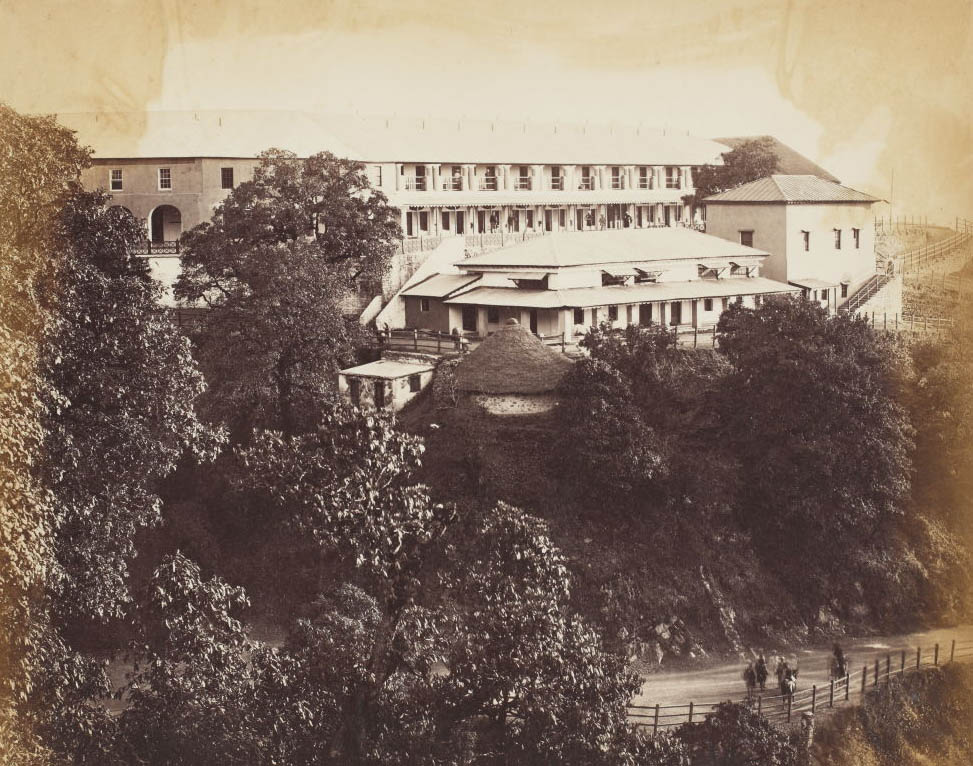
View of a Government building, Landour, c. 1870s-1910s, Thomas Rust © Sarmaya Arts Foundation 2019.1.14
It didn’t take much convincing for British governors to pack their trunks and head for the hills. By the 1880s, the governor of Madras Presidency and his council were spending eight months a year in Ooty. Through the same decade, the annual cost of moving the government from Calcutta to Simla and back averaged INR 8,00,000. A larger portion of the army was stationed in hill cantonments, and at least 25 hill-stations existed only to serve military purposes. Improvements in rail connections and the completion of narrow-gauge lines to Darjeeling in 1881 and Simla in 1903, set the wheels in motion for even more highland travel. As Simla began to overshadow Calcutta in political importance, Delhi was declared the official capital in the imperial durbar of 1911.
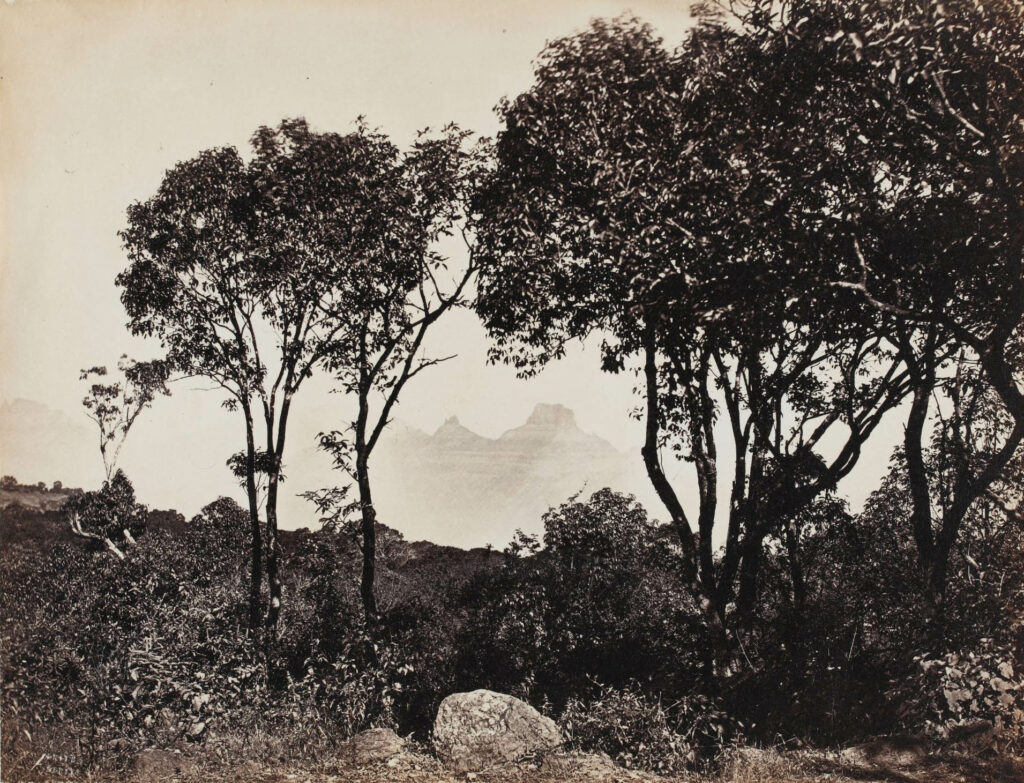
Matheran, near the Croquet Ground, 1850s to 1870s, Francis Frith, albumen print mounted on a card © Sarmaya Arts Foundation 2019.16.77
But events in other corners of the world soon turned the tide against these scenic outposts. After WW1, shipping fares were reduced and subsidised, so people started taking their holidays in Britain instead of trekking up the hills. The Indian National Congress was also raising a fever pitch for self-rule. The British government could not be seen fiddling in the hills as the plains burned. By the 1930s, the government had stopped seeking higher ground completely. So it was that the fortunes of the hill-stations rose and fell with the fortunes of the British. And as the British receded, Indian holidayers laid claim over the slopes, marking them generously with sunset points and lovers’ spots.



